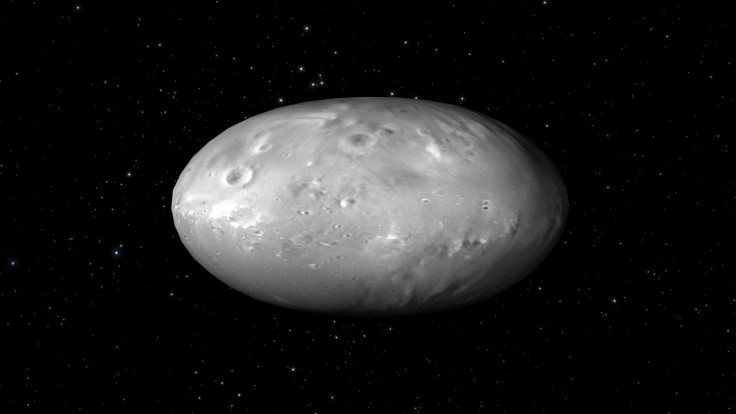Hubble Finds Pluto’s Moons Dance Chaotically Due To Unstable Gravitational Field

Astronomers have analyzed data from NASA’s Hubble Space Telescope to find that two of Pluto’s moons, Nix and Hydra, behave unpredictably as they orbit the planet. The moons wobble so randomly that an inhabitant would have a hard time determining when, and from which direction, the sun will rise each day.
The two moons tremble in “absolute chaos” because they are embedded in a gravitational field, which shifts continuously. According to the scientists, this constant shift is created by Pluto and its largest moon Charon as they spin around each other. Pluto and Charon are collectively called a “double planet system” because they have a common center of gravity.
“Prior to the Hubble observations, nobody appreciated the intricate dynamics of the Pluto system,” Mark Showalter of the SETI Institute in Mountain View, California, and one of the lead researchers of the study, said in a statement on Wednesday. “Our research provides important new constraints on the sequence of events that led to the formation of the system.”
The effect, resulting from the variable gravitational field, is strengthened by the football-like spherical shape of the moons, the scientists said, adding that Pluto’s other two moons, Kerberos and Styx, are also likely to be in a similar situation.
NASA’s Kepler space observatory had found several planetary systems orbiting double stars, and astronomers now believe that the latest discovery of the turmoil within the Pluto-Charon system could help better understand how planetary bodies orbiting a double star system might behave.
“We are learning chaos may be a common trait of binary systems,” Doug Hamilton of the University of Maryland at College Park, and co-author of the study, said in the statement. “It might even have consequences for life on planets if found in such systems.”
The study, published in the journal Nature on Wednesday, also found that Pluto’s fourth moon Kerberos is as dark as a charcoal, while other frozen moons are as bright as sand. Astronomers expect that NASA’s New Horizons spacecraft, which will fly by the Pluto system in July, will reveal more details about the black moon as well as other odd discoveries made by Hubble.
“Hubble has provided a new view of Pluto and its moons revealing a cosmic dance with a chaotic rhythm,” John Grunsfeld, associate administrator of NASA’s Science Mission Directorate in Washington, said in the statement. “When the New Horizons spacecraft flies through the Pluto system in July we’ll get a chance to see what these moons look like up close and personal.”
© Copyright IBTimes 2024. All rights reserved.






















